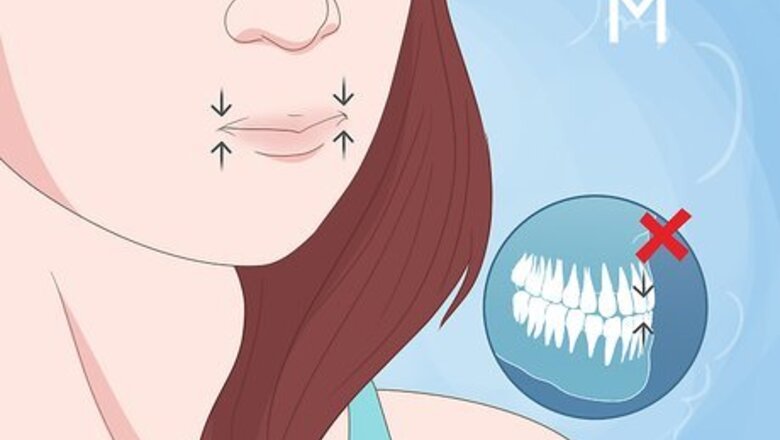
views
Using the Right Lip Position
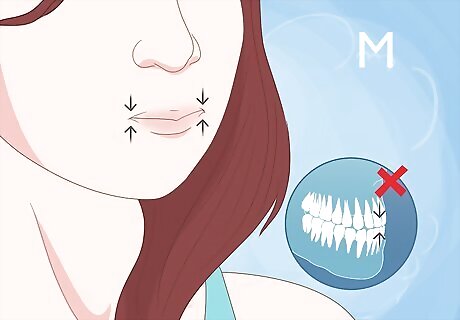
Press your lips together and keep the corners of your mouth tight. Making a sound on a trumpet requires more than just blowing air into it. Use the proper lip technique for the best tone. Start by saying the letter M, and holding your lips together right when they touch each other. Then tighten the corners of your mouth. This is the starting mouth position for trumpet playing. Don’t pucker your lips. Keep your mouth straight across. Keep your jaw loose and don’t clench your teeth.
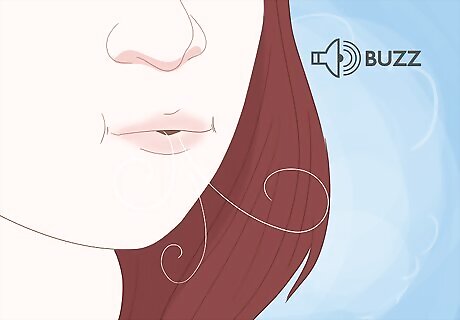
Push air through your lips to make a buzzing sound. This buzzing produces the trumpet sound. Use your diaphragm and push air through your lips while keeping them clenched. Produce a buzzing sound as your lips vibrate. Imagine the noise you’d make if you were imitating a mosquito buzzing. This is the sound you want. Don’t change your lip position like you would when you blow air out. Keep your lips together so they vibrate and buzz. Avoid puffing out your cheeks. Lick your lips first if you’re having trouble getting this sound. It won’t work as well with dry lips.
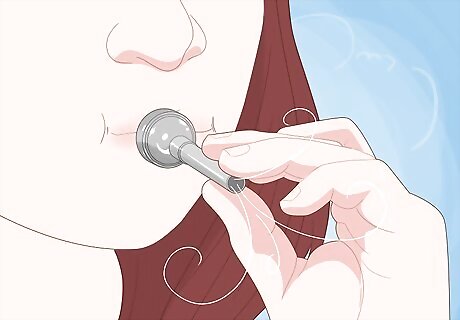
Blow into the mouthpiece when it’s not in the trumpet. When you’ve gotten comfortable buzzing your lips, get a feel for blowing into the trumpet mouthpiece. Take the mouthpiece and press it against your lips gently. Maintain the same mouth position as before. Then buzz your lips into the mouthpiece. The mouthpiece won't produce much sound by itself, so don't worry if notes don't sound good yet. The mouthpiece detaches easily. Just twist it loose a bit while pulling gently and it will come right out. Do the same to put it back in. Don't hit it in or it may get stuck.
Holding the Trumpet
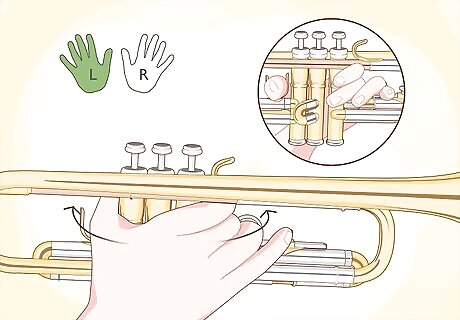
Wrap your left hand around the trumpet body. When playing a trumpet, use your left hand to hold the instrument and your right hand to work the valves. Insert your thumb into the loop attached to the first trumpet valve closest to the mouthpiece. Then wrap your index and middle fingers around the pipe section. Put your pinky through the loop behind the pipes. Use a firm but gentle grip. Don’t squeeze the trumpet.
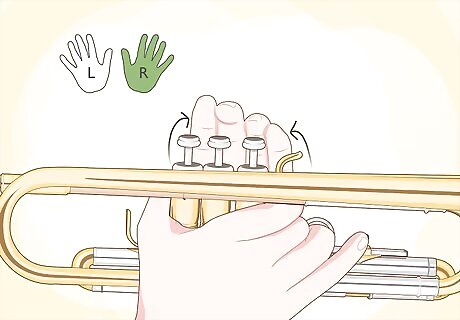
Place your right hand along the trumpet valves. Then put your index, middle, and ring finger on the first, second, and third valves, respectively. Rest your pinky on the pinky ring behind the valves. Don't stick your pinky far in, just rest it. Use a light grip with this hand. Support the trumpet with your left hand, and only use the right hand to control the valves.
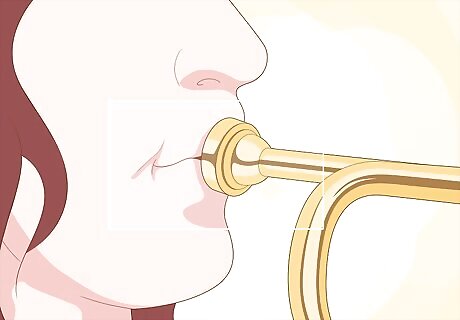
Hold the trumpet gently against your lips. Don’t press the trumpet onto your lips or you won’t be able to work your lips properly. Hold the trumpet firmly and touch the mouthpiece to your lips gently. Don’t press down. Keep your shoulders relaxed while holding the trumpet up. If you try to play and the trumpet sound is weak or nonexistent, your lips may be too far away. Bring the mouthpiece closer to your lips and try again.
Playing Your First Notes
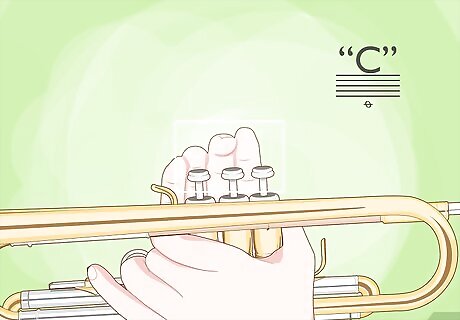
Blow into the trumpet without pressing any valves for a C note. Take a deep breath before starting. Make the same lip position as before, hold the trumpet gently against your mouth, and buzz your lips. On a typical (B flat) trumpet, this produces a C note. Hold the note as long as you can before stopping to take a breath. If the sound is weak, you may be puckering your lips instead of buzzing them. Reset your mouth position and try again. This first note will probably sound rough and choppy. Don’t worry, you’re just starting out. Keep practicing to improve your playing. Playing without pressing down any valves is called open position.
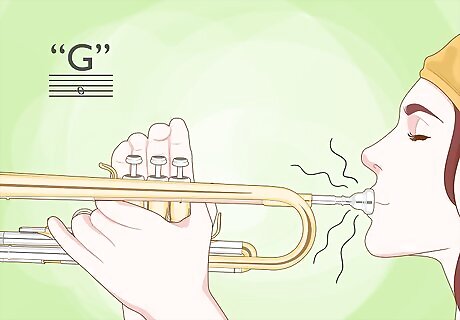
Vibrate your lips faster to play a G note. Another note you can play in open position is a G. Play this by buzzing your lips harder. Push more air out so your lips vibrate faster. This raises the pitch of the note and produces a G. Play a C and G right after one another to hear the differences between the two. Pay attention to the feeling when you vibrate your lips for each note. Build muscle memory so you can do both without thinking.
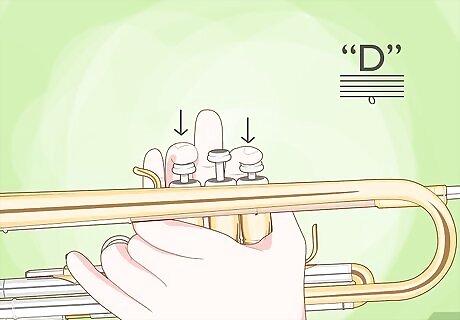
Press down the first and third valves for a D note. After mastering your first two notes in open position, move on to playing notes with fingering positions. For a D note, blow with the same force as you did for a C note and press down the first and third valves.
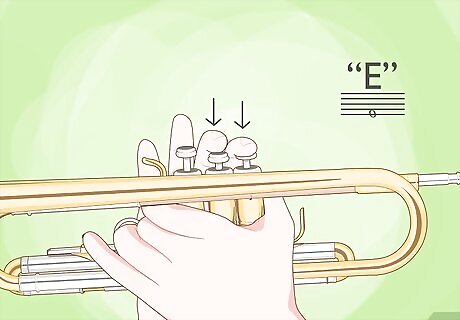
Play an E note by pressing the first and second valves. The next whole note above D is E. Play this note by pressing the first and second valves and blowing with the same force as you did for a C note.
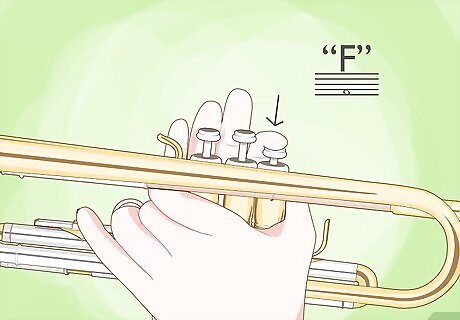
Hold down the first valve for an F note. The final note you can produce with the same vibration level as a C note is an F. Hold down just the first valve and blow for this note.
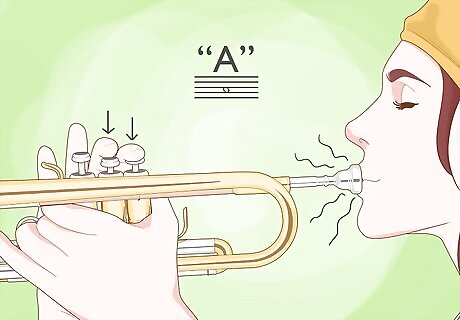
Vibrate your lips more for an A note. For the next two notes, blow through the trumpet with the same force you use for a G note. For an A note, press down the first and second valves while using a G note force.
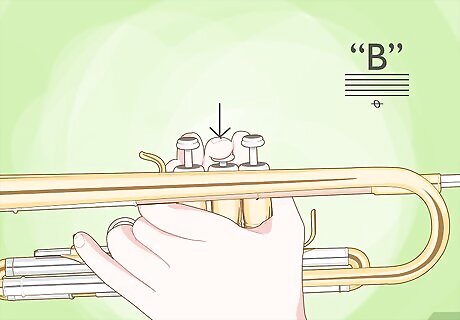
Press down the second valve for a B note. The final natural note on a trumpet is a B (though you can play different octaves). Blow with the same force you would for a G, then press only the second valve for this note.
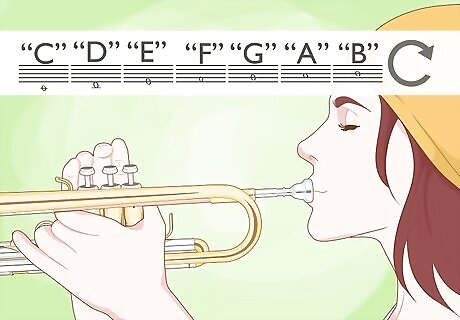
Play all seven notes in order. After playing each note individually, start joining them together. Start on the C and work your way up to the B, playing each note in between. Stop to take a breath between each note at first. Then work on making the pattern smoother, with less of a pause in between. When you’ve gotten good at working up the scale, try playing it backwards. Start at B and work back down to C. Then mix the pattern up. Play the notes in different order. See which note combinations sound good and make up your own tunes.
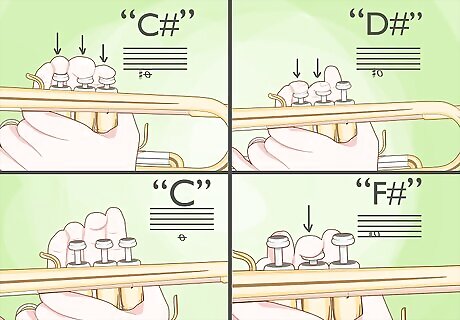
Mix flat and sharp notes into your playing. Sharps and flats are halfway between whole notes in the musical alphabet. Different blowing patterns and finger positions produce flats and sharps. Learn these patterns to widen your playing. In musical notation, a ♯ sign means sharp, ♭ means flat and ♮means natural. For a C# (D♭), press down all three valves. For a D# (E♭), press down the second and third valves. For F# (G♭), press down the middle valve only. Use a C lip vibration for all three. For a G# (A♭), press down valves two and three. For A# (B♭), press the first valve. Use G lip vibration for both.
Advancing Your Skills
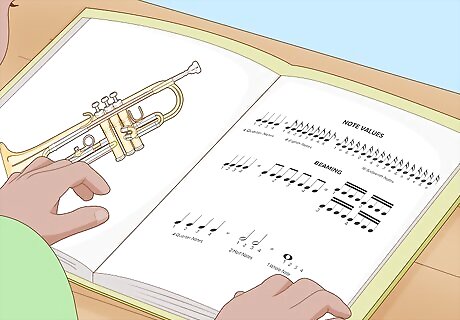
Learn to read music. Reading music will expand your musical knowledge and make it much easier to learn songs. Find a good guide online or work with a teacher to develop music reading skills. Then practice what you’ve read by playing it on your trumpet. There are many resources online that teach you how to read music. For more instruction, try taking lessons from a local music store or school.
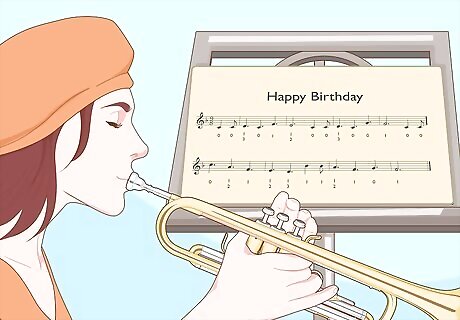
Find easy songs to play. After you’ve learned individual notes and scales, the best way to progress is putting those notes together to play songs. Look online for some easy songs and melodies to practice playing different notes in order. Then move on to more difficult songs like jazz and blues pieces. Some popular, easy tunes for trumpet are "Happy Birthday", "Ode to Joy", "Kum Ba Yah", and "Frère Jacques". Songs don’t need to have trumpet parts for you to play them. Since you know how to form different notes, you can easily translate music onto the trumpet if you know the notes for the song.
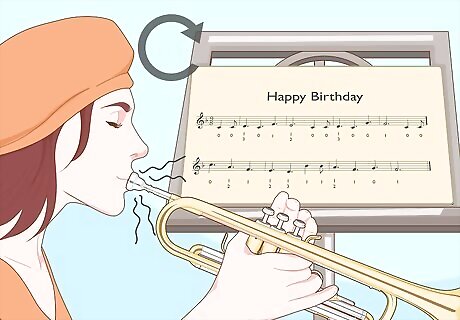
Practice screeching your notes. Screeching, or screaming, is an advanced technique where players jump several octaves in a single breath. Professional players usually use this technique in solos. Bring your playing to the next level by working on this technique. For a screech, vibrate your lips very quickly and push out a lot of air. This drives very high notes from the trumpet. First try to drive these high-pitched sounds from the trumpet, then work on controlling them better.
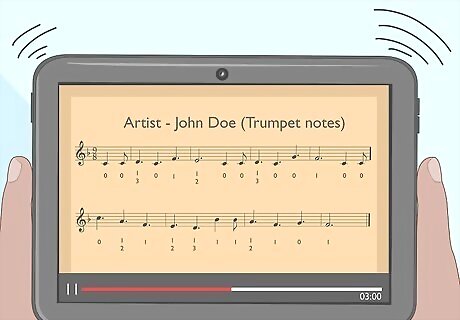
Listen to great trumpet players for inspiration. As with any instrument, learn from the greats if you want to be a good trumpet player. Go back and listen to some of the best trumpet players in history to hear how they used the instrument. Luckily, most of this music is available on the internet for free, so tracking it down is easy. Some of the greatest trumpet players are Louis Armstrong, Miles Davis, and Dizzy Gillespie. Listen to their recordings to hear examples of expert playing. Also learn about how these players practiced and played. You might pick up some habits that will improve your playing. Jazz has especially good trumpet playing. If you aren’t into it already, try listening to some classic jazz records for more great playing.



















Comments
0 comment